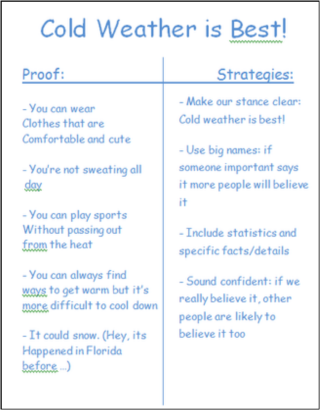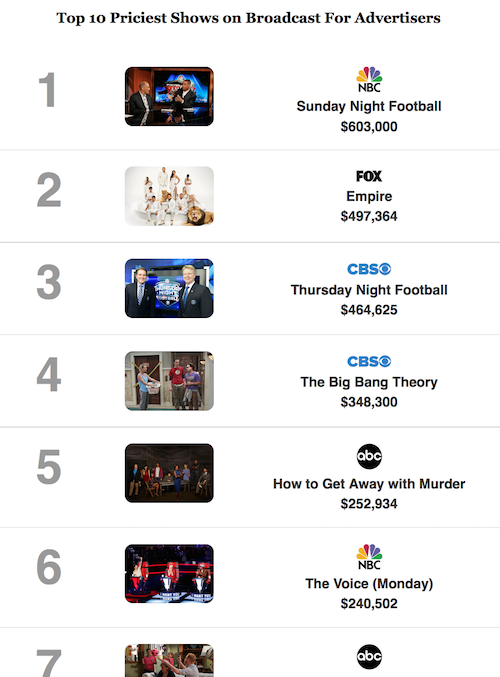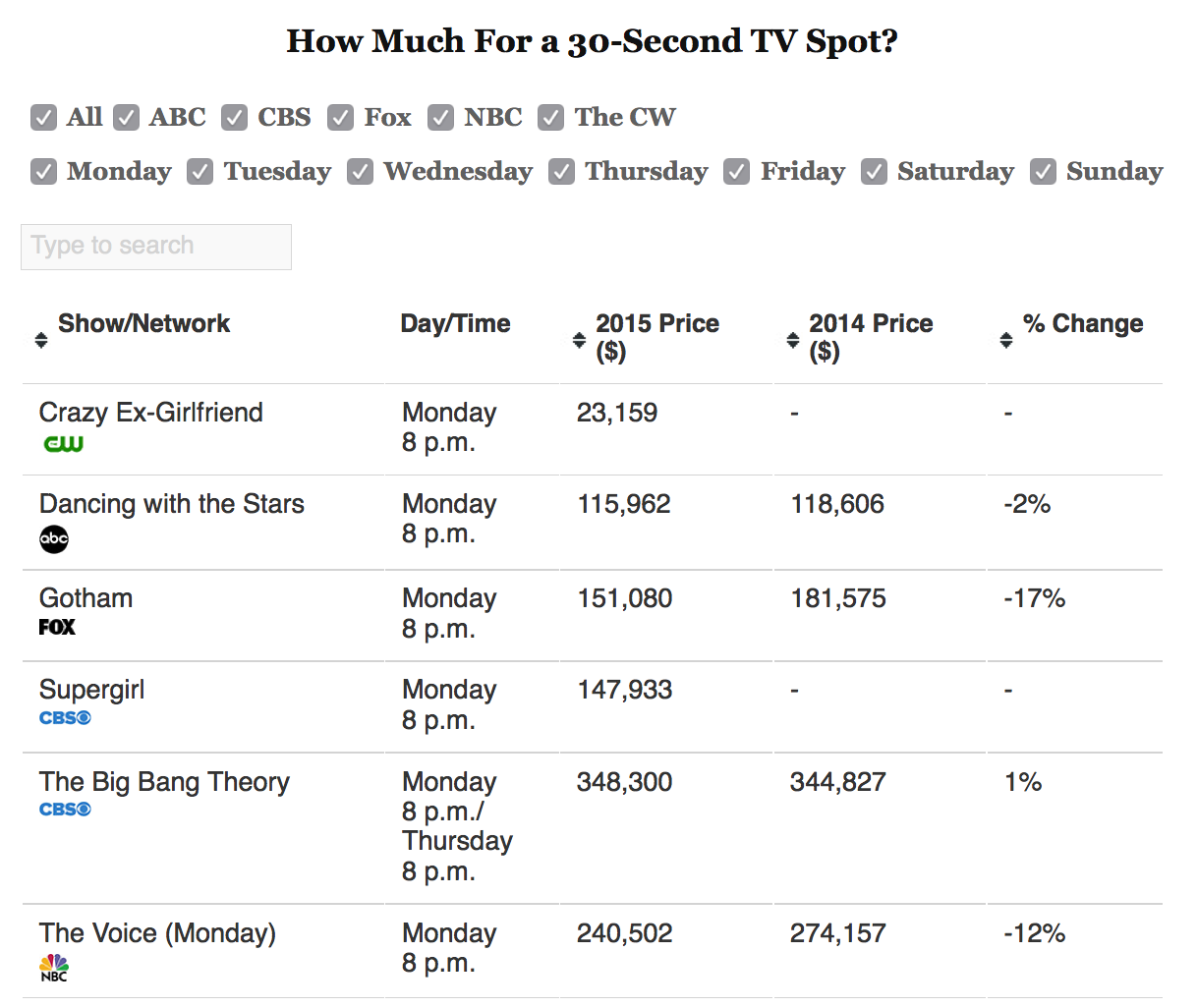Tie TV Advertising to Media Literacy Lessons
 By Frank W. Baker
By Frank W. Baker
Companies are spending billions of dollars on TV, print, and digital advertising to swing us towards their products and services. (Source)
You know those TV shows your students just can’t get enough of? Those shows could not have gotten “on the air” if it weren’t for plentiful commercials. Today’s television programming is made possible by those advertisers. (The exceptions are Public TV and premium commercial-free cable networks, like HBO.)
 I am reminded of the slogan I heard many years ago: “The following program is brought to you by the sponsor. “Today we can move the words in that sentence around and come up with new sentence that might help students better understand the economics of TV: “You (the audience) are brought to the sponsors by the program.” Think about it.
I am reminded of the slogan I heard many years ago: “The following program is brought to you by the sponsor. “Today we can move the words in that sentence around and come up with new sentence that might help students better understand the economics of TV: “You (the audience) are brought to the sponsors by the program.” Think about it.
Do your students know how TV shows get on the air? The annual rite of pitching new TV shows to advertisers, known as “upfronts,” occurs every Spring, but probably gets little attention from educators.
As educators, we don’t always think about commercials, or how much they cost, except possibly when they become the subject of the annual Super Bowl football game.
This month, Advertising Age, the periodical which covers the ad/marketing industry, released the TOP 10 HIGHEST PRICED PROGRAMS, its annual survey of the cost of advertising inside prime time TV shows. (The survey also includes the cost to advertise in many other prime time programs.)
And like last year, NBC’s “Sunday Night Football” broadcast is again commanding the highest price for a 30-second commercial ($603,000). That is significantly lower than it was last year when the cost of a spot was $665, 375. (Yes, that’s still more than half a million dollars for one spot lasting a fraction of a minute.) And why does it cost that much? Because more people are tuned into NBC at that time than to any other TV show.
It’s not only sports that command high prices. The hot new drama, “Empire” (FOX) comes in at #2 on AdAge’s survey, costing $497,364 per spot. (It’s the first drama series to rate this high in a number of years.) Many cable series (e.g., AMC’s Walking Dead) and situation comedies, also known as sit-coms (which are highly rated), charge advertisers steep rates. (See a long list of shows at the end of the AdAge article.)
Media Literacy and Television Advertising
I always remind the audiences in my media literacy workshops that Television has a first name: “Commercial.”
 One of the key concepts in media literacy is that all media are businesses – designed to make money. If the media doesn’t make money, it ceases to exist. (TV shows which fail to maintain a large enough audience get cancelled.)
One of the key concepts in media literacy is that all media are businesses – designed to make money. If the media doesn’t make money, it ceases to exist. (TV shows which fail to maintain a large enough audience get cancelled.)
So those advertisers who’ve spent lots of money to advertise on TV don’t just sit back and watch the shows they advertise on. They also pay careful attention to the ratings. It is the ratings that measure how many eyeballs are watching each week. (For more about teaching with and about ratings, see my website Math In the Media.)
Television, with its plentiful data, offers one excellent way for students to understand the connections between the entertainment media they are served and the advertising/marketing engine that drives the entertainment economy.
Advertising & the Common Core
 Many educators I know teach with and about advertising. Before Common Core, ads were taught as part of the “techniques of persuasion.” Now many teachers are positioning advertising as “argument,” an important CCSS element. )The wiki site “Teaching Pathos and Advertising As Argument” offers some guidance with examples and lesson ideas.)
Many educators I know teach with and about advertising. Before Common Core, ads were taught as part of the “techniques of persuasion.” Now many teachers are positioning advertising as “argument,” an important CCSS element. )The wiki site “Teaching Pathos and Advertising As Argument” offers some guidance with examples and lesson ideas.)
The following CCSS standards might also be helpful:
W. 9-10.1.a. Introduce precise claim(s), distinguish the claim(s) from alternate or opposing claims, and create an organization that establishes clear relationships among claim(s), counterclaims, reasons, and evidence.
W. 9-10.1.b. Develop claim(s) and counterclaims fairly, supplying evidence for each while pointing out the strengths and limitations of both in a manner that anticipates the audience’s knowledge level and concerns.
W. 9-10.1.c. Use words, phrases, and clauses to link the major sections of the text, create cohesion, and clarify the relationships between claim(s) and reasons, between reasons and evidence, and between claim(s) and counterclaims.
W. 9-10.1.e. Provide a concluding statement or section that follows from and supports the argument presented.
Advertising also plays a role in the teaching standards for Social Studies, Economics, Art and Health to name just a few.
Teaching Students about TV Economics
Since students love to watch, text, and talk about television programs, I am hoping you might want to engage them in a brief media literacy lesson designed to dig a little deeper.
Using the AdAge Annual Prime Time Ad Cost Survey story as a jumping off point, distribute the chart How Much For a 30-Second TV Spot? as a handout (here’s a snip from it below).
1. Have students identify all of the various genres represented in the Ad Age annual survey results (handout). That should include sitcom, drama (hospital, detective, police, etc.) , sci-fi, horror, variety, news, comedy, late night, reality, etc. Which ones command the highest ad costs; the lowest? Why do you think those genres attract large audiences? Which genres account for the most in the list; the least? (Last year, CBS’s “The Big Bang Theory” commanded $344,827, the most for any sitcom. Was is the same this year?)
2. Assuming your students’ favorite TV genre is reality, ask them to discuss and identify the appeal of reality. (Another interesting discussion: how real is “reality TV.”) Ask them to locate all of the “reality” television programs in the survey. What networks broadcast reality TV? Why do some reality TV programs air more than one night in a week? Which night of the week seems to attract the largest audiences?
3. Have your students look at all of the various genres that are broadcast on the same night at the same time. For example, at 8 pm on a weeknight you might find a crime drama on one network, a sitcom on another, and a reality TV show on a third. Which program commands the highest ad price?
 4. Have students contact the sales managers of local TV stations and cable operators. Have them inquire about the various ad rates charged to car dealers and other local advertisers who want to position their spots inside popular prime time TV shows or shows like Wheel of Fortune and Jeopardy. Task them with creating an infographic showing local ad rates.
4. Have students contact the sales managers of local TV stations and cable operators. Have them inquire about the various ad rates charged to car dealers and other local advertisers who want to position their spots inside popular prime time TV shows or shows like Wheel of Fortune and Jeopardy. Task them with creating an infographic showing local ad rates.
5. Ask students to assume the role of a local advertiser. (That could be anything from a car dealer to a tire store to a jewelry store to a toy store.) Ask them to speculate which TV show(s) would be the best match for them to reach their target demographic. You might even assign students the task of watching a specific TV show over the course of a week making a list of all of the advertisers on that show.
Advertising’s place in the media literacy curriculum
Examining advertising costs on television should not just be the domain of the media studies or TV production teacher. Nor should it be relegated only to that time of year when the Super Bowl ads are in the news.
Educators who are already engaging their students in analyzing and creating media also need to consider how media productions are funded. Without commercials, TV programming would cease to exist. The desire to drive up advertising rates also shapes what we see on television in profound ways.
TV advertising is a multi-million dollar business, and the more we know about it, the better.
Frank W. Baker is a regular contributor to MiddleWeb.com where he examines the media and popular culture and helps make the “media literacy” connection for teachers and educators. He is the author of three books, the most recent of which is “Media Literacy in the K-12 Classroom” (ISTE, 2014). He is a frequent presenter at school professional development days as well as curriculum conferences. He maintains the internationally recognized Media Literacy Clearinghouse (www.frankwbaker.com/mlc). He can be reached at fbaker1346@gmail.com or via Twitter @fbaker.



































